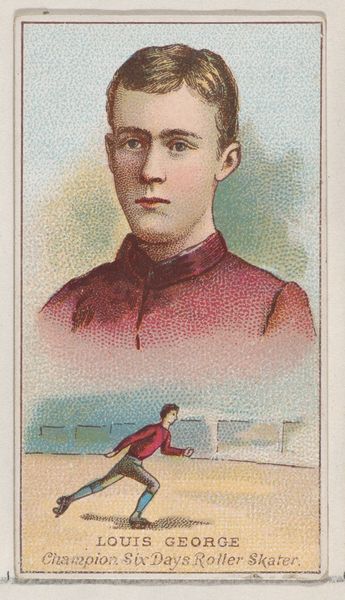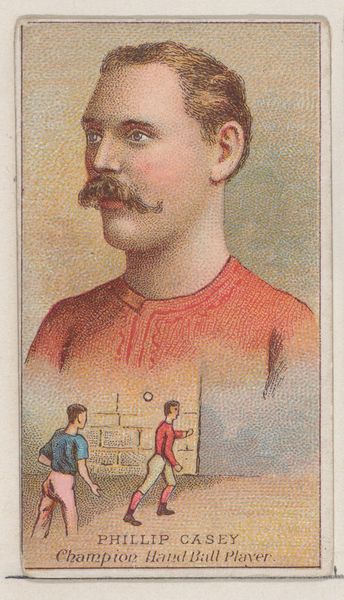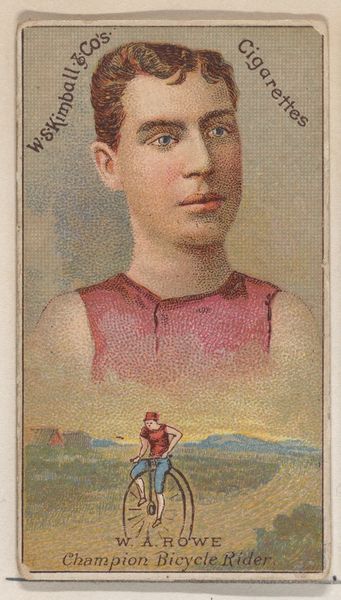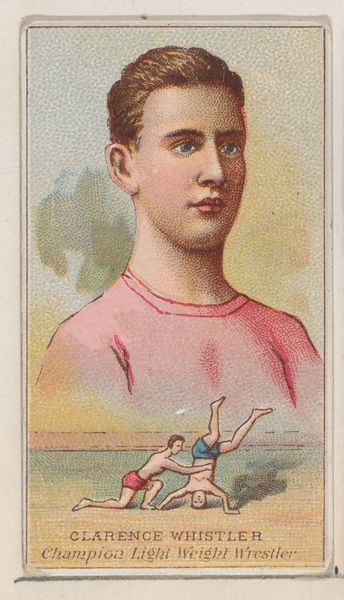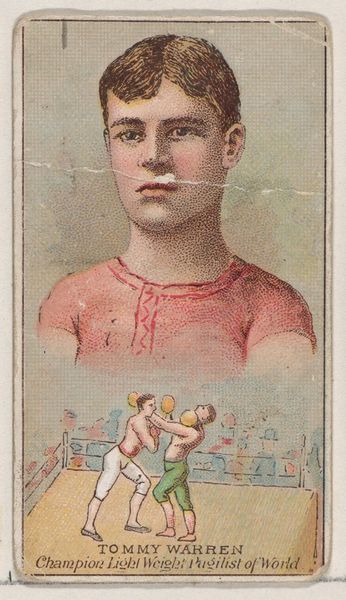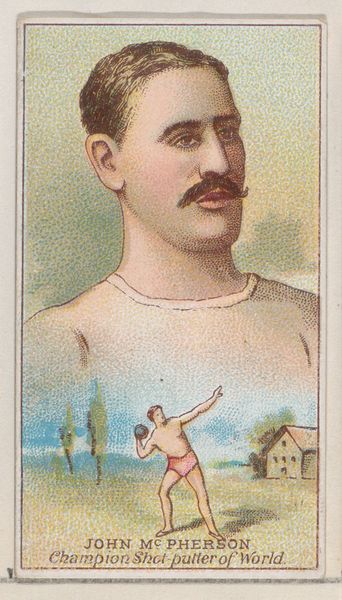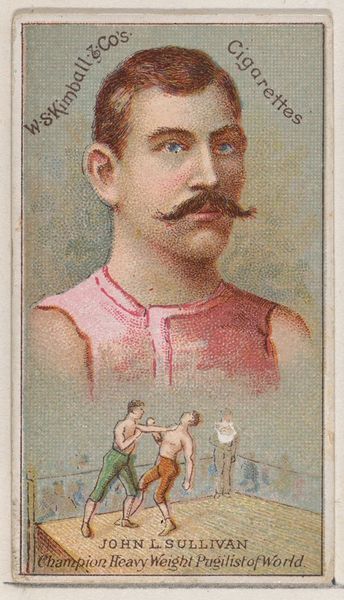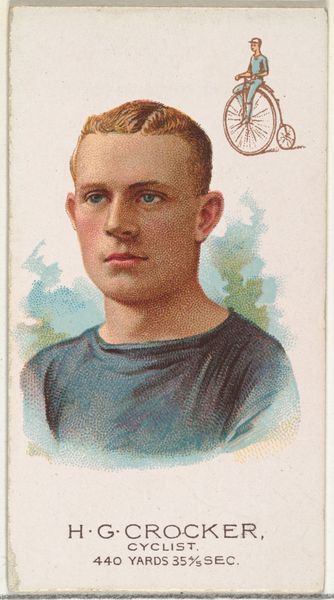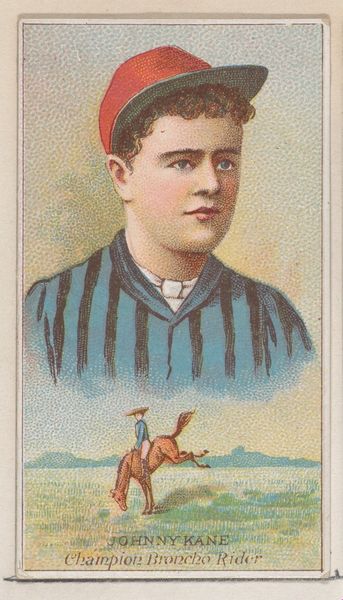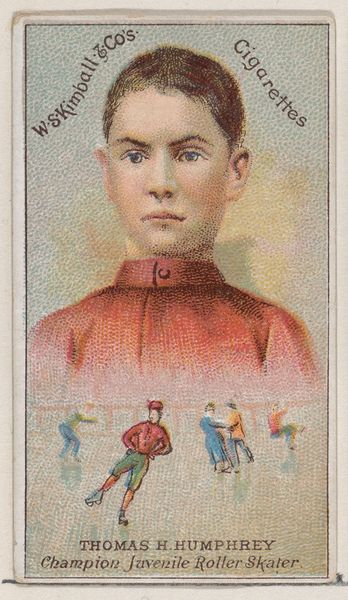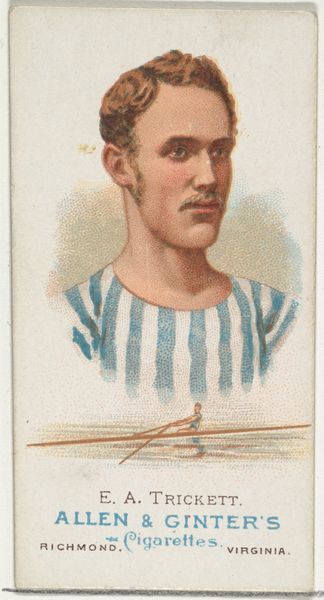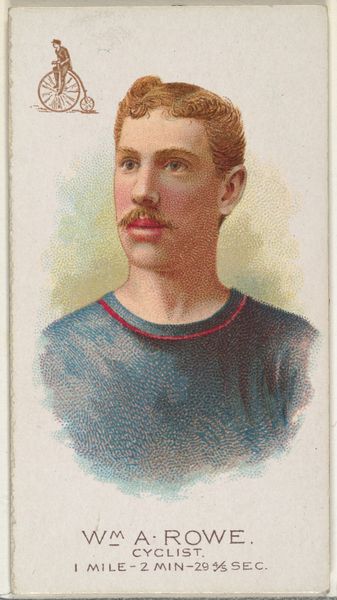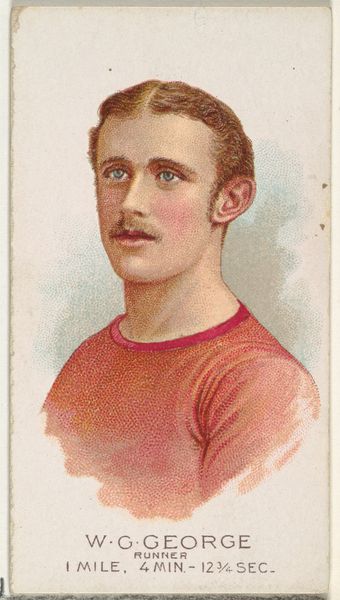
George W. Hamilton, Champion Jumper of the World, from the Champions of Games and Sports series (N184, Type 1) issued by W.S. Kimball & Co. 1887
0:00
0:00
drawing, coloured-pencil, print
#
portrait
#
drawing
#
coloured-pencil
# print
#
coloured pencil
#
men
#
portrait drawing
#
athlete
#
portrait art
Dimensions: Sheet: 2 11/16 × 1 1/2 in. (6.8 × 3.8 cm)
Copyright: Public Domain
Curator: Let's take a look at "George W. Hamilton, Champion Jumper of the World," a colored-pencil print from 1887 issued by W.S. Kimball & Co. as part of their "Champions of Games and Sports" series. What are your first thoughts? Editor: There's a certain nostalgic charm, almost childlike, in its rendering. The athlete's portrait seems rather stiff compared to the vibrant miniature figure leaping below. Curator: Absolutely. The portrait style connects to a longer history of heroic depictions. It suggests questions about how athleticism and masculinity were being constructed and commodified at the time. Think about the burgeoning popularity of organized sports, advertising, and how this fed into an idea of American identity. Editor: And the symbols...The image almost reduces the athleticism to pure spectacle. He is leaping through a blurry natural setting. Does this relate to broader concepts of bodily prowess in connection with classical symbolism? Is he more of a symbol of speed than of himself? Curator: Exactly. There's a dialogue happening between idealization and reality here. These cards were distributed with cigarettes, thus also speaks to consumerism of the period. The card’s message promotes athletic excellence, while subtly entwining that ideal with a commercial product—cigarettes. Editor: A commodity, indeed. The jumper embodies agility, but in a very limited space and medium. His symbolic energy is all we're left with. Is this connected to the growing mass culture, where figures became emblems? Curator: That's insightful. It hints at the growing phenomenon of celebrity, even at this early stage. Hamilton isn't just an athlete; he is a public persona linked to consumption and aspirational ideals, all within the frame of late 19th-century advertising. Editor: The symbols layered on this trading card invite reflection. Looking through it we understand how the champion athlete’s meaning has transformed across a century, from athletic body to printed picture. Curator: Agreed. This small card encapsulates big ideas about identity, commerce, and the power of image in shaping public perception.
Comments
No comments
Be the first to comment and join the conversation on the ultimate creative platform.
